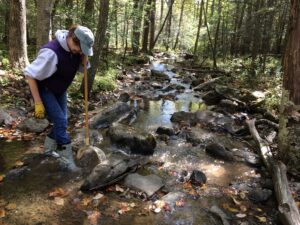Causes of Biological Impairment
Interstate Commission on the Potomac River Basin
Biological Impairments: Unbalanced, Undesirable, and Unsustainable
 A body of water is called “impaired” when it is too polluted or degraded to meet water quality standards. A biological impairment can have many causes. Identifying those causes and deciding how to alleviate or remove them is often challenging.
A body of water is called “impaired” when it is too polluted or degraded to meet water quality standards. A biological impairment can have many causes. Identifying those causes and deciding how to alleviate or remove them is often challenging.
- Total Maximum Daily Loads (TMDLs): A TMDL is a “pollution diet” for body of water. A TMDL sets the maximum amount of a pollutant that can enter the body of water and still allow it to meet the water quality standards set for it by the state and the federal government. Biological impairments that lead to TMDLs include benthic macroinvertebrates and bacteria.
- Benthic TMDLs for the Goose Creek Watershed (2004): The lower mainstem of Goose Creek and a section of one of its larger tributaries, Little River, were listed as impaired on Virginia’a 1998 Section 303(d) Total Maximum Daily Load Priority List and Report. The impairments are characterized as “Benthic” because they were based on assessments of the benthic macroinvertebrate community. Excess sediment loads were the likely cause of the benthic impairment. ICPRB determined the maximum sediment loads from different sources that the impaired waterbodies could assimilate and still meet water quality standards.
- Stressor Identification Methods Used for Impaired Waters in the Chesapeake Bay Watershed States (ICPRB Report 12-5): This report was an early attempt to describe and compare the various state methods for identifying the major stressors impairing stream macroinvertebrate communities.
Sometimes, however, a known stressor doesn’t impact biological communities as expected. This was the case when the Savage River reservoir was flushed of built-up sediment in 2011.
- Lower Savage River Benthic Macroinvertebrate Sediment Impact Study (ICPRB Report 12-1)
Return to Aquatic Life Main Page
